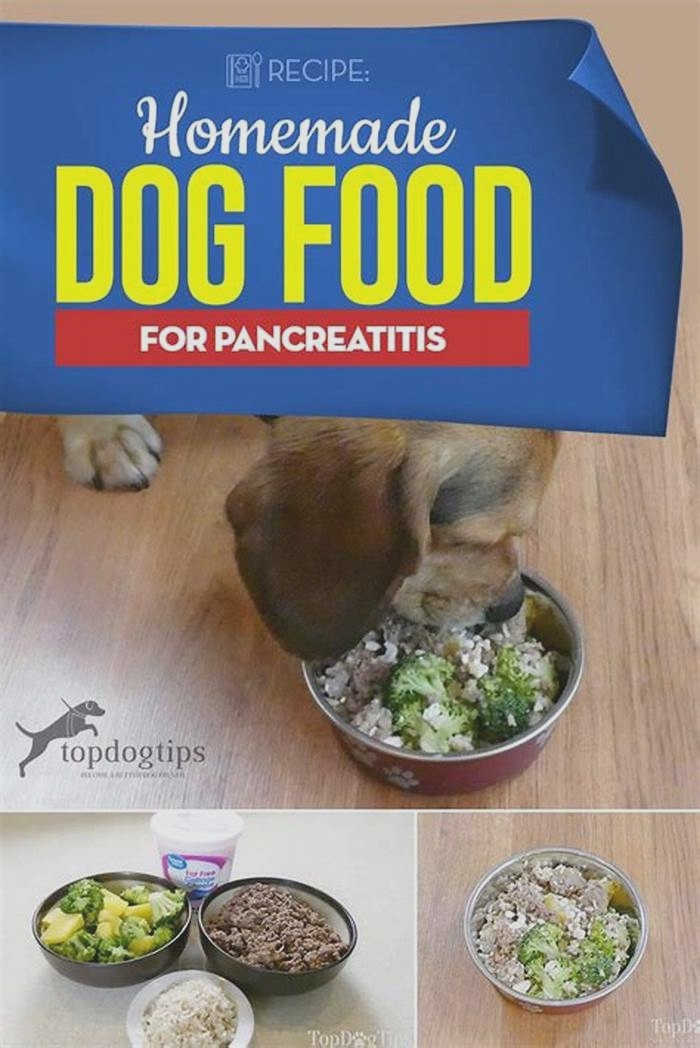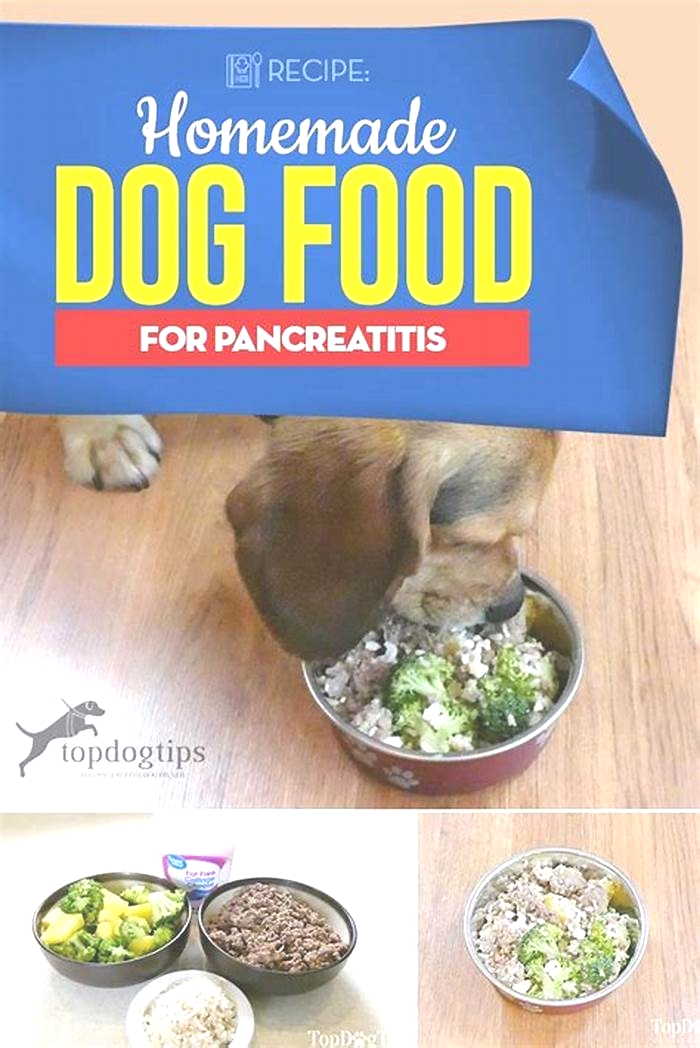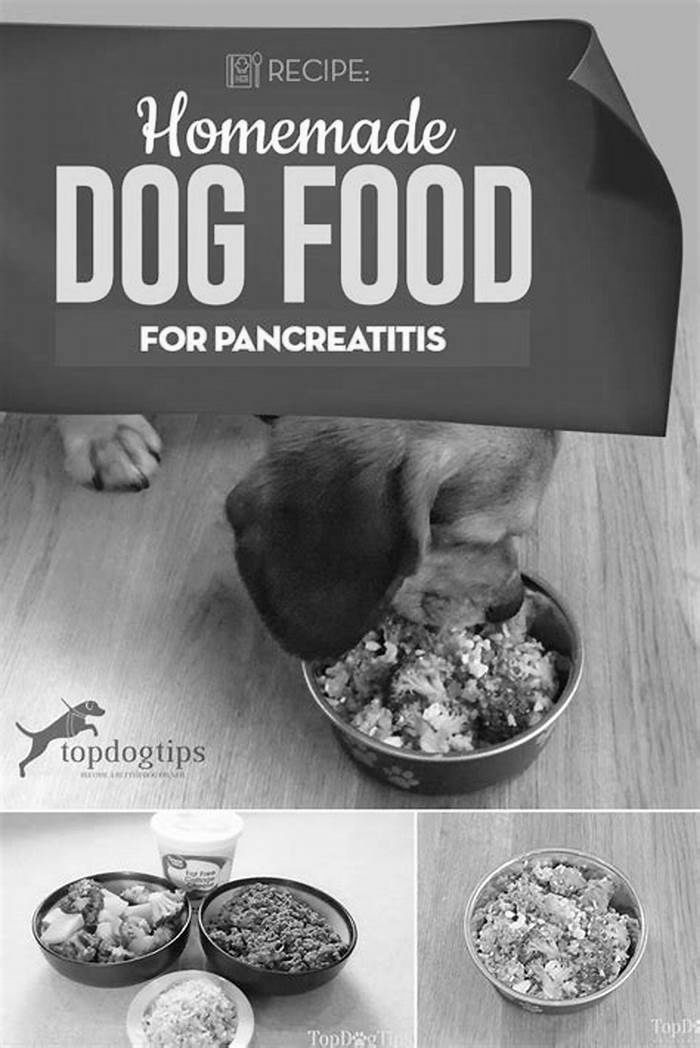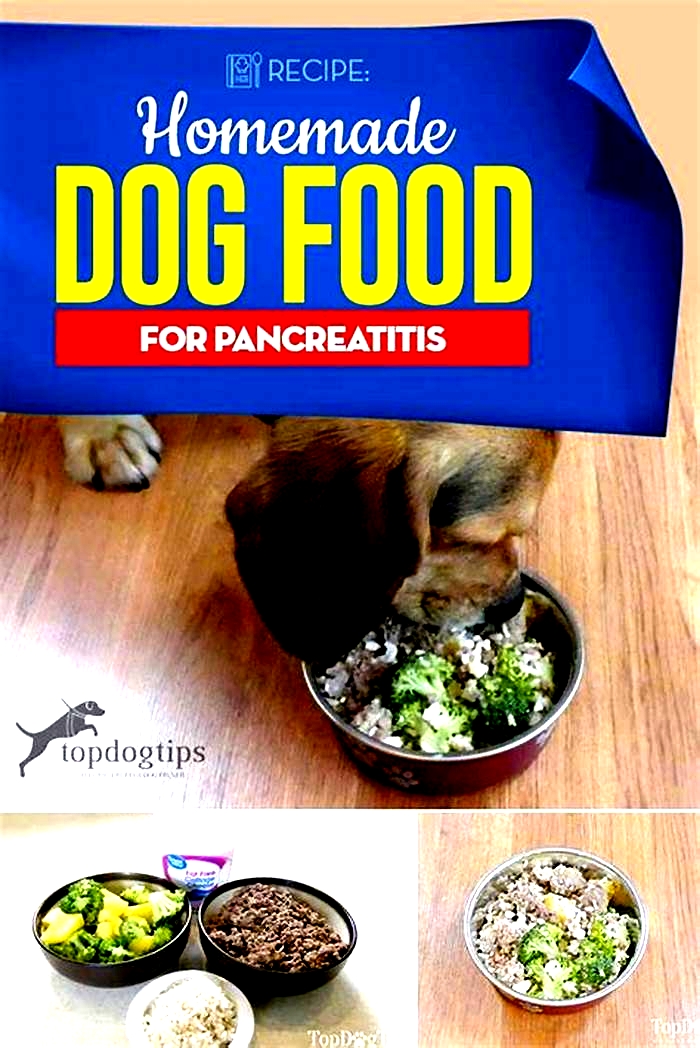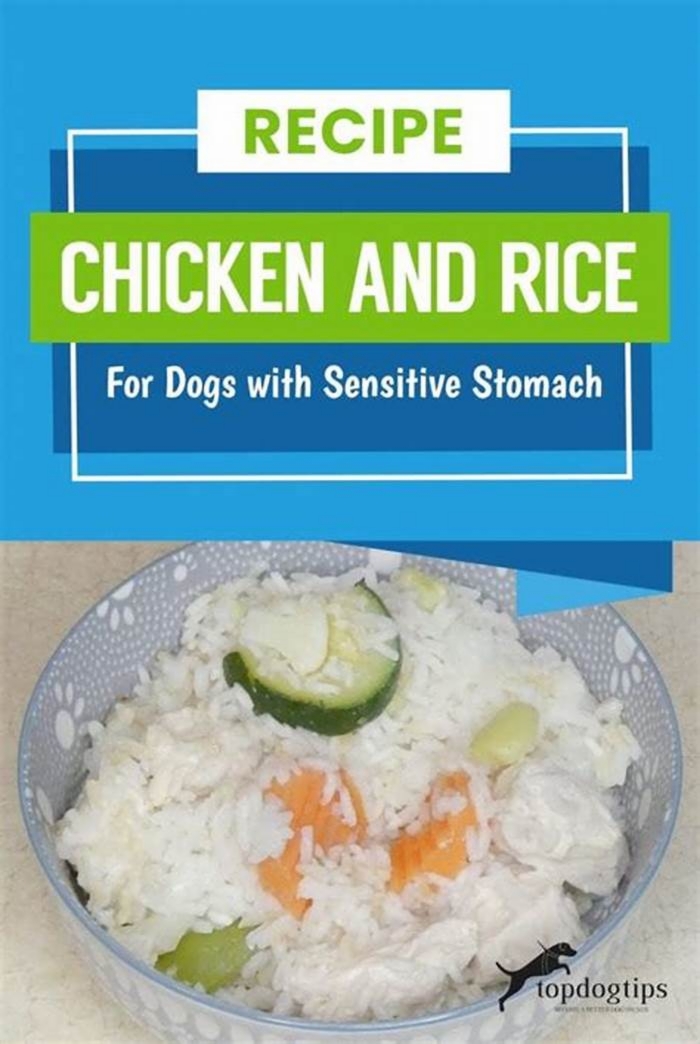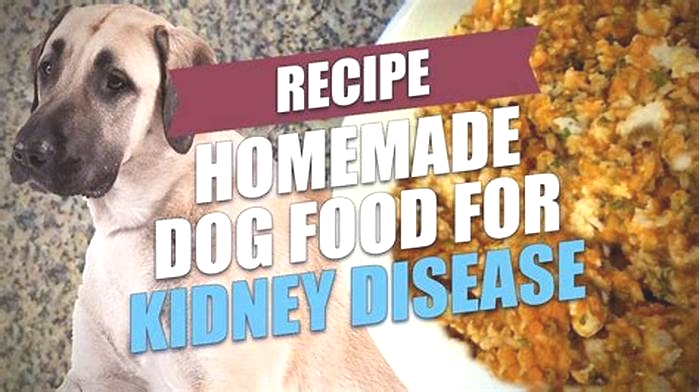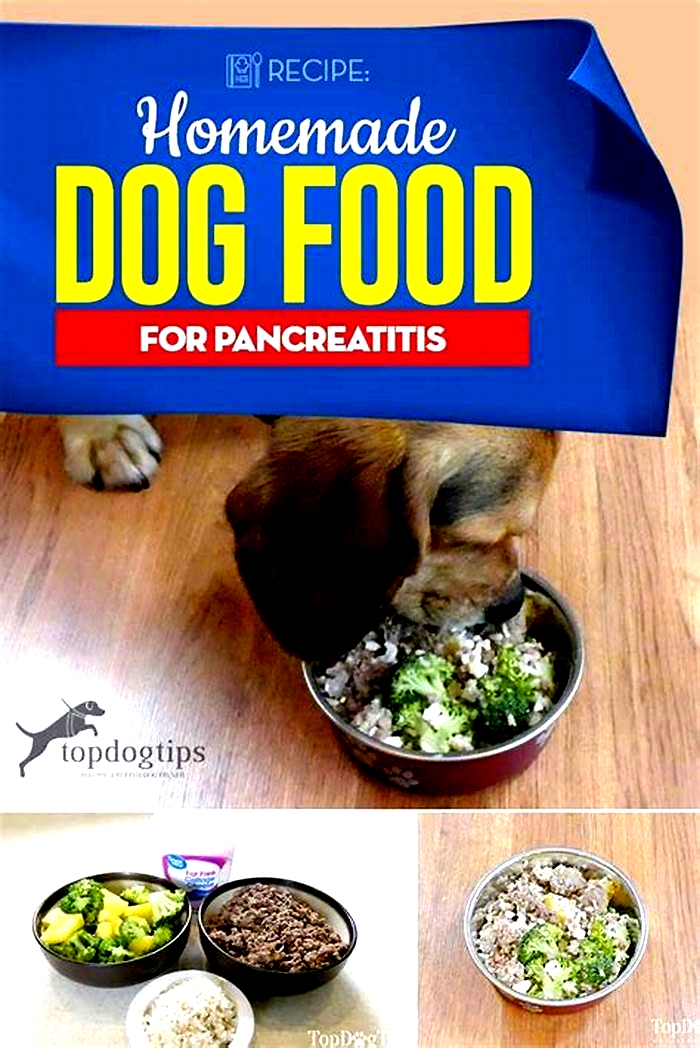homemade dog diet for pancreatitis
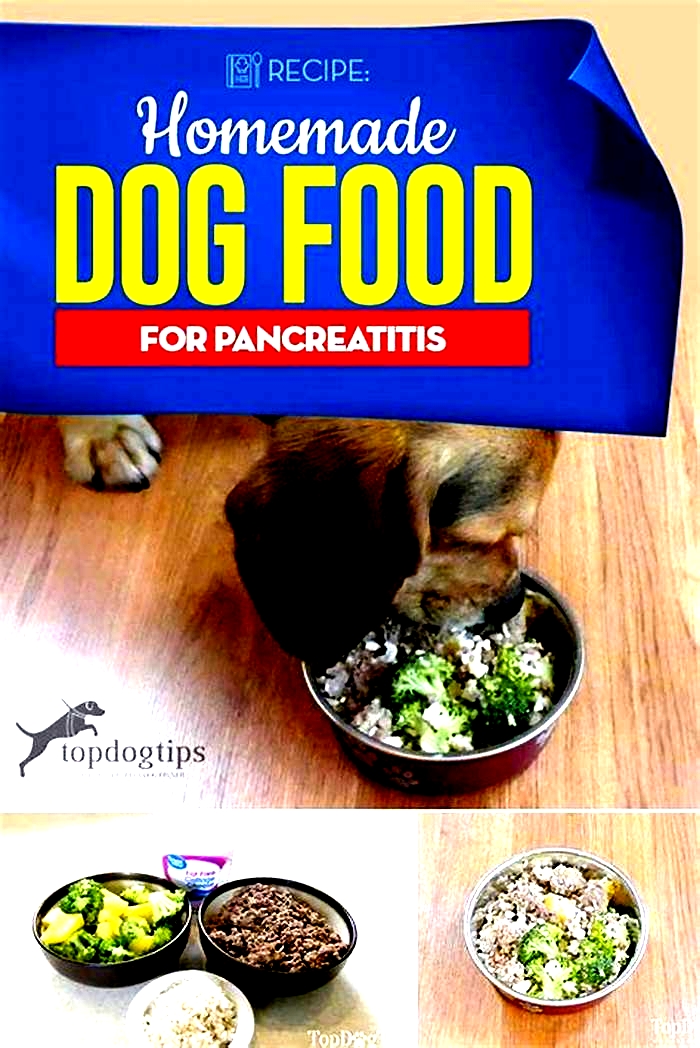
Recipe: Homemade Dog Food for Pancreatitis
Pancreatitis in dogs is a disease that is quite common in domestic canines. This condition is an inflammation of the animal's pancreas (the organ is responsible for producing digestive enzymes and insulin). Serving homemade dog food for pancreatitiscan help manage this condition.
 When the pancreas becomes inflamed, the digestive enzymes it produces spill out and onto the surrounding organs. The organs closest to the pancreas are the liver and kidneys. When digestive enzymes spill over onto these vital organs, the body begins to digest them.
When the pancreas becomes inflamed, the digestive enzymes it produces spill out and onto the surrounding organs. The organs closest to the pancreas are the liver and kidneys. When digestive enzymes spill over onto these vital organs, the body begins to digest them.
Vomiting, fever, diarrhea, and difficulty breathing are all symptoms of pancreatitis. If any of these symptoms come on quickly or you notice a combination of the previously mentioned symptoms, you need to seek veterinary attention immediately. I know these symptoms could also be a sign of numerous other conditions, but when it comes to your dog's health, it's better to be safe than sorry.
Your veterinarian will likely recommend a restricted diet if your dog is diagnosed with pancreatitis. Your dog's body has a lot of healing to do, and a limited diet that includes homemade dog food for pancreatitis is likely the best option.
READ MORE:Pancreatitis in Dogs Symptoms, At-Home and Veterinary Treatment, Prevention
Homemade Dog Food for Pancreatitis Recipe
 Ingredients
Ingredients
- 1 cup lean ground beef (fat drained)
- 1 cup brown rice (cooked)
- 3/4 cup nonfat cottage cheese
- 1/2 cup squash
- 1/2 cup broccoli
Directions
If you don't seek veterinary care for a dog suffering from pancreatitis, the condition is sure to get worse. In fact,if left untreated pancreatitis can be life-threatening. Low-fat diets are typically recommended for dogs suffering from this condition.
This homemade dog food for pancreatitis is simple to make. With just 5 ingredients, this recipe takes about 30 minutes to prepare.
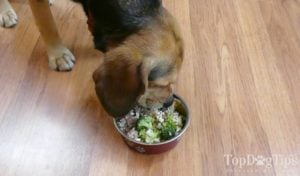 First, you'll need to cook the ground beef and drain the fat. You will also have to cook the rice according to the instructions on the package. You need 1 cup of COOKED rice, which will come from about 1/2 cup of UNCOOKED rice.
First, you'll need to cook the ground beef and drain the fat. You will also have to cook the rice according to the instructions on the package. You need 1 cup of COOKED rice, which will come from about 1/2 cup of UNCOOKED rice.
You will also need to steam or boil the squash and broccoli. Once all of the ingredients are prepared, all you have to do is combine them in a medium-size mixing bowl.
The recommended serving size for this homemade dog food for pancreatitis is about a 1/2 cup for every 25 pounds of body weight per serving. You'll need to feed 2 servings per day. For example, if your dog weighs 50 pounds, he would need 1 cup of food in the morning and 1 cup at night.
You can store leftovers in the refrigerator for 5-7 days. You can also make this food in bulk and store it in the freezer for up to 3 months.

READ NEXT: 6 Most Common Homemade Dog Food Ingredients
What You Need to Know About Dog Food for Pancreatitis
The pancreas is not an organ that many pet parents have reason to think aboutthat is, until something goes wrong with it. Pancreatitis is the most common disease of the pancreas in dogs. Lets investigate the causes and symptoms of pancreatitis in dogs and what can be done to prevent and treat this serious condition, including the role that a low-fat dog food can play.
Causes of Pancreatitis in Dogs
Dogs can develop pancreatitis for a number of reasons, including:
Eating something with a high-fat content, particularly if it is not part of their regular diet
Being overweight
Pancreatic infections
Having other medical conditions like Cushings disease, diabetes mellitus, or abnormally high levels of fat in the blood
Exposure to some types of medications or toxins, including organophosphates, L-asparaginase, azathioprine, corticosteroids, sulphonamides, potassium bromide, phenobarbital, and zinc
Abdominal trauma that affects the pancreas
A genetic or breed predisposition (Miniature Schnauzers, Yorkshire Terriers, Silky Terriers, Miniature Poodles)
A history of pancreatitis
In many cases, no specific underlying cause can be identified.
Symptoms of Pancreatitis in Dogs
The pancreas has several functions in the body, one of which is making digestive enzymes. In good health, these enzymes remain inactive until they are secreted into the intestinal tract in response to a recent meal.
While the exact mechanisms are unclear, pancreatitis develops when these digestive enzymes start working prematurely, while they are still within the pancreas, leading to pancreatic inflammation and sometimes infection and/or tissue death.
Pancreatitis may be mild or severe. It can develop suddenly or over a long period of time. It may happen once or become a recurrent or chronic problem. All of this explains why the symptoms of pancreatitis in dogs can vary tremendously. Dogs with pancreatitis typically have some combination of the following symptoms:
None of these symptoms are specific for pancreatitis in dogs. To make a definitive diagnosis, a veterinarian will have to run some tests, starting with a blood chemistry panel, complete blood cell count, fecal examination, urinalysis, and possibly some abdominal X-rays to rule out other diseases that cause similar symptoms.
This initial workup may point to pancreatitis, but additional testing (e.g., cPLI or SPEC-CPL blood tests) is usually also necessary. Sometimes abdominal ultrasounds, exploratory surgery, or other diagnostic procedures are needed to reach a definitive diagnosis of pancreatitis in dogs.
Treatment for Pancreatitis in Dogs
Treatment for pancreatitis will depend on a dogs symptoms and any abnormalities that were detected on his blood work and urinalysis. The goal is to keep the patient comfortable and support his physiological needs while giving the pancreas time to heal.
Fluid therapy and dog medicationsto control nausea and pain are often necessary. Your veterinarian may prescribe dog antibioticsto treat or prevent infection. Severely affected dogs may need to be hospitalized for an extended period of time and require more aggressive treatment with feeding tubes, plasma transfusion, or surgery.
Research has found that dogs with pancreatitis who quickly start eating dog food again have an improved prognosis. Therefore, veterinarians aggressively use anti-nausea drugs to treat vomiting in attempt to get food into dogs with pancreatitis as soon as possible.
Dog Food for Pancreatitis
Most veterinarians recommend that dogs eat a highly digestible, low-fat dog food as they are recovering from pancreatitis. Dietary fat is thought to be a major stimulus for the pancreas to secrete digestive enzymes, which may worsen pancreatic inflammation.
A low-fat dog food can promote pancreatic healing while still providing all the nutrition dogs need to heal. If your dog has a history of repeated bouts of pancreatitis, your veterinarian may recommend that you continue to feed a low-fat dog food to prevent flare-ups.
Several well-respected pet food companies make dog foodformulas that are specifically designed to help dogs recover from pancreatitis. Hills dog foods include Hill's Prescription Diet i/d Low Fat Canned Dog Foodand Hill's Prescription Diet i/d Low Fat Dry Dog Food, both of which are supplemented with omega-3 fatty acids that have been shown to reduce inflammation.
Talk to your veterinarian for help in picking the best dog food for pancreatitis based on the specifics of your dogs case.
Image via Jaromir Chalabala/Shutterstock
WRITTEN BY
Jennifer Coates, DVMVeterinarian
Dr. Jennifer Coates is an accomplished veterinarian, writer, editor, and consultant with years of experience in the fields of veterinary...
Diet & Treat Options for Dogs With Pancreatitis

If your dog's diagnosed with pancreatitis, it's important to help soothe the pancreas immediately. Pancreatitis can be extremely serious, or even fatal, so your veterinarian will work with you to reduce inflammation in your dog's pancreas quickly while managing pain. Often, this includes providing an extremely low-fat diet for your dog but understanding the food-based cause and risk factors can help.
"The most common cause of pancreatitis for our pets is eating fatty foods,"emergency-vets.com notes like getting table scraps during the holidays. So your veterinarian will probably recommend a very low-fat diet if your dog's diagnosed with pancreatitis. And, even if the bout of pancreatitis passes, your dog may need to stay on low-fat food to avoid future incidents.
Need to Know
Never try to manage your pancreatic dog's diet alone. While I've included a few foods usually ok below, ask your veterinarian about your individual dog's needs and diet.
Bland Foods to Feed a Dog With Pancreatitis
Once your dog's diagnosed with pancreatitis, your veterinarian may recommend either a temporary home-cooked diet or a low-fat commercial diet.
These often include ingredients such as:
- Chicken
- Turkey
- Lean ground meat
- Oats and oatmeal
- Barley
- Sweet potatoes
- Cottage cheese
Can Dogs With Pancreatitis Eat...
As a certified canine nutritionist, pet parents often ask me about nutrition and issues with specific ingredients, but remember to consult your veterinarian about any of the following that are usually ok for dogs with pancreatitis. Every dog's situation is unique.
Eggs?
Whole eggs, including the yolk, are too fatty for dogs with pancreatitis. Cooked egg whites are usually okay, but it's best to check with your vet before offering them.
Vegetables?
Yes, dogs with pancreatitis can usuallyeat vegetables. Vegetables are typically low in fat and high in fiber, which can be beneficial for dogs with this condition. However, it's important to choose the right vegetables and prepare them appropriately.
Safer vegetables for most dogs with pancreatitis include small portions of:
Vegetables should be cooked with no added fats or seasonings and should be introduced slowly into the diet to ensure they dont cause gastrointestinal upset.
Need to Know
Always avoid onions and any vegetables that can be toxic to dogs.
Beef?
Dogs with pancreatitis should avoid beef, especially if it's high in fat. Pancreatitis requires a low-fat diet to reduce stress on the pancreas, and typical cuts of beef can be too fatty and thus potentially harmful to dogs with this condition. If beef is to be included in their diet, it should be a very lean cut, thoroughly trimmed of fat, and cooked without any added oils or fats.
However, because individual dogs may react differently and because there can be variations in the severity and triggers of pancreatitis, it's crucial to consult with your veterinarian before offering beef or any new food item to a dog with pancreatitis. They can provide personalized dietary advice and tell you if a small amount of lean beef is safe for your dog.
Steak?
Steak is generally not recommended for dogs with pancreatitis, especially if it's a fatty cut. Pancreatitis requires a strict, low-fat diet to prevent aggravation of the pancreas. Since most steak cuts contain a higher amount of fat, they can be too rich for a dog with this condition.
If a veterinarian approves the inclusion of steak in a dog's diet, it must be a very lean cut, cooked without any oils or butter, and all visible fat should be trimmed away. Even then, it should only be given in small, controlled amounts.
Chicken and Rice?
There's a common misconception that dogs with upset tummies or digestive problems, in general, should be fed chicken and rice. As a certified canine nutritionist, this is something that I often talk to pet parents about. Ultimately, if your dog absolutely refuses to eat anything else, chicken and rice is better than nothing. But it doesn't have the nutrients your dog needs to get better.
What to Feed Dogs With Pancreatitis
Your veterinarian will recommend either a home cooked temporary diet for your dog, or a commercial diet.
Low-Fat Prescription Dog Food Options
This type of commercial dog food is specially formulated to be low in fat yet still full of the essential protein, carbohydrates, and vitamins that a dog needs. Some prescription brands are:
Homemade Bone Broth Made for Dogs
Instead of cooking up some chicken and rice, you can make your dog some bone broth. This should be the first stop along the way before you feed your dog anything else. Bone broth is a tasty way to give your dog some much-needed nutrients to boost their immune system and give their pancreas a break, and it even has ingredients that help their joint health. They have the best of all worlds with this delicious broth plus as a bonus it's super simple to make.

Ingredients:
There are only a few ingredients to grab, including:
- A bag full of chicken feet
- Apple cider vinegar or lemon juice
- Filtered water
Directions:
Bone broth takes a little while to make, but there are only a few steps. Before you get started, grab your crock pot and set it out on the counter. Then, follow these directions:
- Fill your crock pot with the chicken feet as much as you can
- Add enough filtered water to fully cover the chicken feet
- Drop in 3 tablespoons or so of lemon juice or apple cider vinegar (ACV from the mother is the best)
- Throw the cover on and walk away for about an hour
- Grab a spoon and scoop out any foamy stuff you see floating at the top
- Turn your crockpot on low
- Cook for anywhere between 6-24 hours the longer you cook it, the higher the nutrient content in the broth
- Scoop the top occasionally with a spoon to keep removing the foamy stuff
When the time is up, strain the bone broth to separate the bones from the broth. Let the broth cool, then transfer it to mason jars or sealable containers.Refrigerate your broth for at least an hour. Once it's cooled, skim the fat off the top.
If your broth has a jelly-like consistency, that means you made it right. If it doesn't, it's still packed full of nutrients, but it has less collagen content, which isn't a big deal for what we're needing it for here.
Homemade Dog Food for a Pancreatitis Diet
You may want to check with your veterinarian about cooking your own dog food, especially as a temporary measure while your dog heals. A simple recipe for a low-fat diet is:
- 1cup of cooked boneless chicken, chopped or shredded
- 1 cup cooked rice
- 3/4 cup low or nonfat cottage cheese
- 1/2 cup cooked squash
- 1/2 cup cooked broccoli
If you decide to feed your dog homemade food, ask your veterinarian about additional vitamin supplements. Very low-fat diets can be deficient in vitamins A and E.
Homemade Dog Treats for Pancreatitis
In general, it's best to avoid additional treatsfor dogs with pancreatitis, but you can ask your veterinarian about these low-fat treats as a small supplement.
- 2-1/2 cups rice flour
- 6 tablespoons low sodium/ low-fat chicken broth
- 1 cup cooked squash
- A ground up sweet potato
Mix and add in a few drops of cold water until you have the dough. Roll onto a sheet for a 1/2-inch-thick flat dough. Use a cookie cutter to make shapes or a glass for round cookies, and bake at 350 degrees for 25 minutes.
How Often to Feed a Dog With Pancreatitis
Your veterinarian may also recommend feeding your dog four to eight very small meals a day. Small meals are less likely to overexcite the pancreas. Your dog will also be less likely to vomit after her meal.
Working With Your Veterinarian
Dogs with pancreatitis can experience pain and discomfort and may require a stay in hospital to get better. There are several options to try to comfort a dog with pancreatitis. Talk to your veterinarian about dog pancreatitis treatment at home before you start.
- Talk to your vet about medications to alleviate their pain.
- If theyvomitor haveother digestive issues like diarrhea, your veterinarian can recommend supplements or medications to help.
- Make sure theyhaveaccess to fresh, clean water so he does not become dehydrated.
Cautions
Depending on how serious your dog's pancreatitis is, they might need to stay on the special diet for the rest of their lives to keep the inflammation from coming back. Keep in mind that most home-made diets don't have the nutrients your dog needs long-term, so switching to low-fat dog food may be necessary. No matter what, it's still important to keep super-fatty foods, like that scrumptious turkey skin they've been eyeballing, away from them. As tempting as their puppy eyes are, it's important not to give in.
Recovery Time
The recovery time for a dog with pancreatitis varies with how bad his condition is. Severe cases can result in death if not treated right away. Death rates for severe acute (sudden onset)pancreatitisare approximately 40 percent, so treatment by a veterinarian is crucial. It's possible your dog may have to live with it for his whole life.

Treatable Condition
Pancreatitis is usually treatablewith immediate care, a good diet, and coordination with your veterinarian. Your dog will feel better as their condition improves, and so will you. Managing their condition doesn't have to be overwhelming. Just take some simple steps, and work with your veterinarian closely, and your pup will be feeling better in no time.
2024 LoveToKnow Media. All rights reserved.

